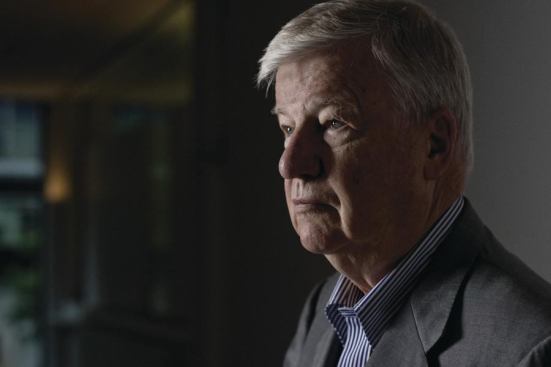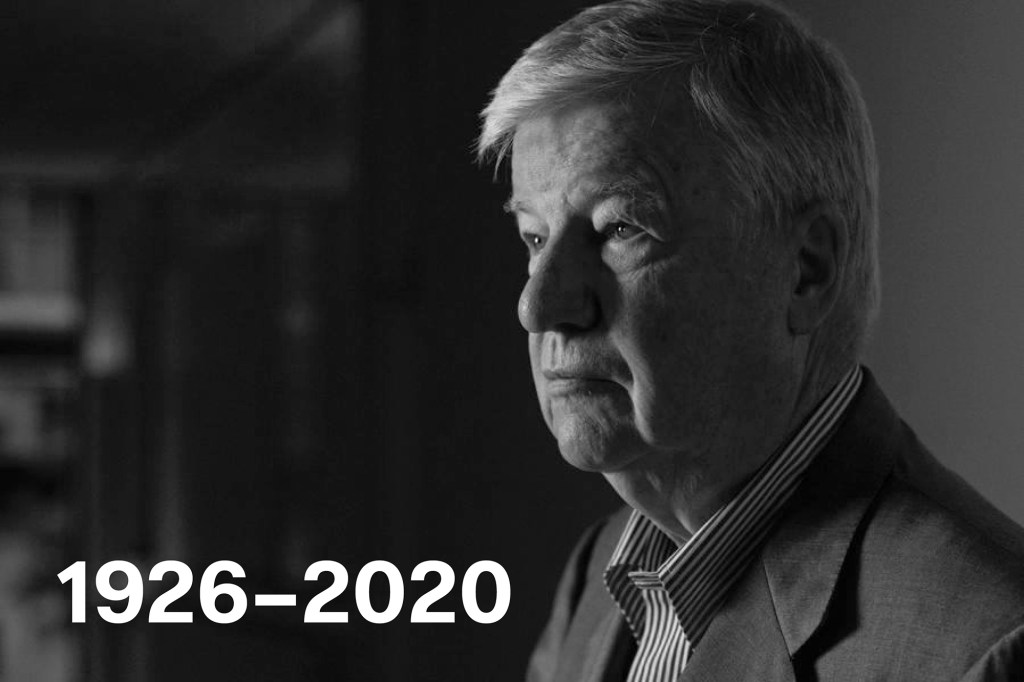
Noah Kalina
Henry Cobb, FAIA.
On Monday, New York City–based Pei Cobb Freed & Partners founding partner Henry Cobb passed away at 93. Renowned for this contributions to cultural and civic design throughout his career, Cobb received several awards, including an AIA National Honor Award and the AIA 25 Year Award in 2011 for one of his best known works, the John Hancock Tower in Boston.
“At this solemn time we express our appreciation for our esteemed colleague, leader, and friend, Henry Cobb,” said Pei Cobb Freed & Partners leadership in a statement from the firm. “Over a career that spanned seven decades of sustained and brilliant accomplishment, his breadth of engagement and depth of insight guided generations for architects. Unwavering in his commitment to both attainment and restraint, Harry lifted our art to a definition of truth itself. His many accolades attest to the accessibility of his ideas, the depth of his humility, and the sincerity of his friendship.”
Born in 1926, Cobb graduated from Harvard University in Cambridge, Mass., in 1947 where he went on to earned his M. Arch. from the Graduate School of Design in 1949. Alongside the late famed Modernist I.M. Pei, Cobb helped found I.M. Pei & Associates in 1955. The organization that would eventually become Pei Cobb Freed & Partners in 1989. In his early career, Cobb completed projects such as the Courthouse Square in Denver in 1960 and the Place Ville Marie in Montreal in 1962. In 1968, Cobb revealed the proposal for his most recognized work, the John Hancock Tower, which was completed in 1976. After some controversy from Bostonians who resisted the idea of a skyscraper being erected alongside the city’s Trinity Church, the structure has endured to become a beloved local landmark.

Symbiosus/Flickr via Creative Commons license
In a 2011 interview with ARCHITECT, Cobb explained how the Hancock Tower marked a “hinge point” in his career with the development of the contingent skyscraper. “It’s a concept which I think is not only exemplified by, but was sort of invented in, the Hancock Tower,” Cobb said in the article. “If I was going to say, “What have I contributed as a professional in my life?” I would say the idea of a contingent building. That is to say, a building that is not autonomous, not self-referential, but which is shaped by its place.”
Cobb served as a studio professor and as chair of the Harvard GSD department for architecture from 1980 to 1985 and continued as a visiting lecturer throughout his career. In 1992, Cobb was named architect in residence at the American Academy in Rome.
Since the new of Cobb’s passing, many members of the architecture and design community have responded on social media.
Sadly, the great Harry Cobb has died at 93. A teacher, poet of form, gentleman, longtime partner of Pei, the architect of the Hancock Tower, still producing works of subtlety like the African American Museum in Charleston at the end of his life. A truly humane and generous soul.
— Michael Kimmelman (@kimmelman) March 4, 2020
Loss of a mentor and great man.
— Vishaan Chakrabarti, FAIA (@VishaanNYCA) March 4, 2020
Heartbreaking news. One of the great architects of our time, and a man of decency, generosity of spirit and eloquence that equaled his enormous talent. His quiet and understated manner made him even more unusual in the world of architecture. https://t.co/zeztwcpsnt
— Paul Goldberger (@paulgoldberger) March 4, 2020
At this solemn time we express our appreciation for our esteemed colleague, leader, and friend, Henry Cobb.
Over a career that spanned seven decades of sustained and brilliant accomplishment,
1/3— Pei Cobb Freed (@PeiCobbFreed) March 4, 2020
This article has been updated to reflect that Henry Cobb passed away on Monday, March 2.
